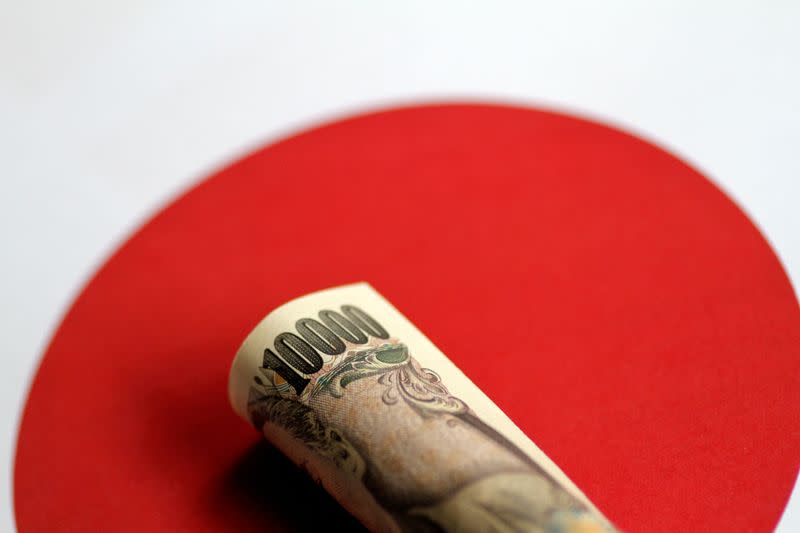Veteran BOJ watcher warns Japanese households facing more pain from weak yen

By Leika Kihara
TOKYO (Reuters) - Japanese households are bearing the brunt of the central bank's snail-pace normalisation of loose monetary policy which is giving investors a perfect excuse to push down the yen, Izuru Kato, a prominent Bank of Japan watcher, said on Tuesday.
The weak yen has become a headache for Japanese policymakers by boosting the cost of imported raw materials, pushing up inflation and hurting consumption.
Mindful of the negative economic impact of the weak currency, the BOJ could raise interest rates in July and move them up to 1% by the end of next year, said Kato, chief economist at Totan Research who has close ties with incumbent policymakers.
"Real rates remain very low in Japan and the BOJ's balance sheet extraordinarily huge," he told Reuters in an interview. "The longer it keeps rates low, the bigger the risk of causing a damaging spiral of a weakening yen and rising inflation."
The yen has depreciated more than 10% against the U.S. dollar so far this year.
As wages failed to rise more than inflation, Japan's real consumption remains below levels before the BOJ deployed its massive asset-buying programme in 2013, he said.
While the BOJ ended eight years of negative rates and other remnants of its radical stimulus in March, it keeps short-term rates around zero and continues to buy roughly 6 trillion yen ($37.6 billion) of government bonds each month.
"Even as it whittled down stimulus, the BOJ's priority has been to keep bond yields stably low. That came at the cost of accelerating the yen's declines," Kato said.
"With the yen so weak now, the central bank needs to reconsider its priorities. In the end, exchange-rate stability is as important as bond market stability," he said, calling on the BOJ to speed up the pace of policy normalisation.
The BOJ next meets for a policy meeting on July 30-31, when it will announce a detailed plan on how it will taper its bond buying and reduce its nearly 600-trillion-yen balance sheet.
The BOJ could reduce its monthly bond buying to 5 trillion yen for the first three months, then make bigger cuts once every quarter, Kato said.
While the 10-year government bond yield could rise to around 1.5% from current levels below 1%, the BOJ can probably trim its balance sheet by around 200 trillion yen without upending markets as private financial institutions would take up bonds sold by the central bank, Kato said.
"The BOJ has said the risk of being behind the curve in addressing too-high inflation is low," Kato said. "In reality, it doesn't have much time to waste."
($1 = 159.4100 yen)
(Reporting by Leika Kihara; Editing by Kim Coghill)

 Yahoo Finance
Yahoo Finance 